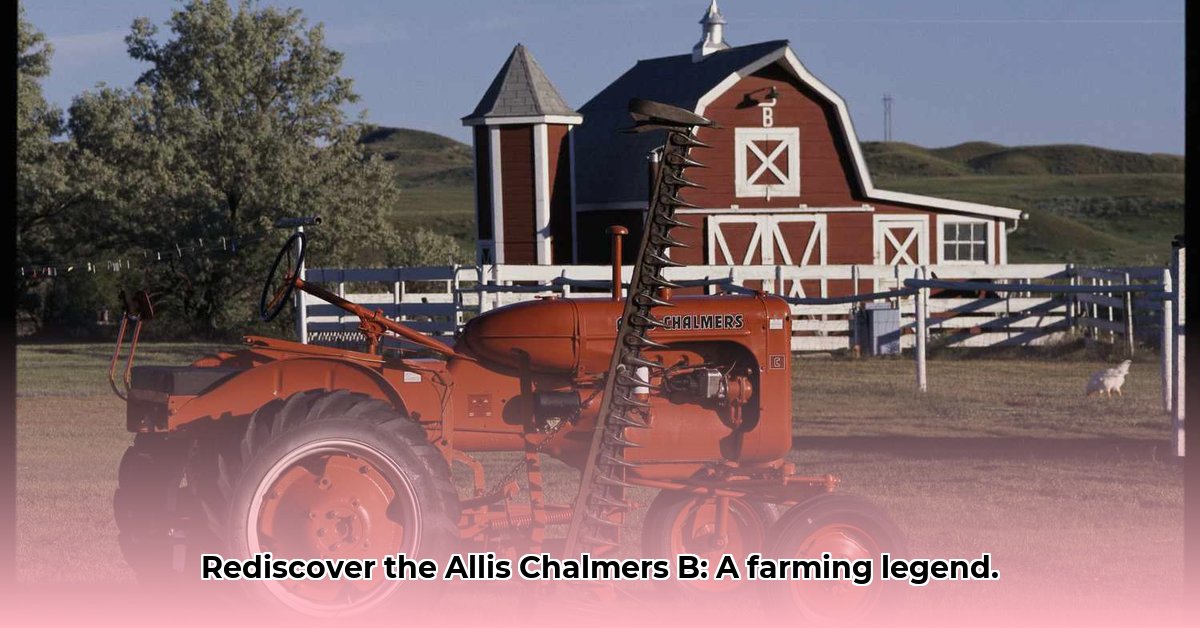
The rhythmic chug of a tractor engine, the scent of freshly turned soil – these sensory experiences define rural America's agricultural heritage. Central to this history is the Allis-Chalmers Model B tractor, a machine that revolutionized farming for countless smallholders during the challenging 1930s and beyond. This isn't merely a story about a tractor; it's a narrative of innovation, resilience, and the quiet transformation of how we produce food. We will explore the Model B's design, its economic impact on rural communities, and its surprisingly complex relationship with sustainable agriculture – all explained accessibly, regardless of your tractor expertise. For more on Allis-Chalmers history, see this Model B information.
The Dust Bowl and a Dawn of Hope
The 1930s presented immense hardship. The Great Depression's shadow fell heavily on American farmers. The Dust Bowl, a crippling drought across the Great Plains, devastated harvests and rendered land barren. Small farmers, already grappling with low prices and economic uncertainty, faced a precarious existence. Many relied on animal power – horses, mules, oxen – for plowing, planting, and harvesting. This was laborious, slow, and inefficient. While larger, more powerful tractors existed, their high cost placed them out of reach for most small farms.
Then came the Allis-Chalmers Model B.
This wasn't a technological marvel; it was a practical workhorse, prioritizing affordability and utility. While larger tractors dominated the fields of wealthy landowners, the Model B offered a lifeline to smaller operations, bringing mechanization within reach for those who previously couldn't afford it.
An Engine of Change: The Model B's Design
The Model B wasn't flashy. It featured a modest 17-horsepower engine, a stark contrast to today's powerful machines. But this engine possessed considerable power for its time. Its compact design and agile handling made it adept at navigating varied terrain and tighter spaces – essential for farms with irregular fields. The focus wasn't solely on power; it was on practicality and efficiency tailored to small operations. Its maneuverability allowed it to easily fit between crop rows, unlike its larger counterparts.
Simplicity was key to its affordability. The design prioritized reliability and ease of maintenance, minimizing the need for expensive repairs and specialized mechanics. This translated to less downtime and lower operating costs – crucial for farmers working with limited resources. Its robust, albeit simple, construction aimed for longevity, ensuring the machine could endure years of challenging work. Did this simplicity sometimes compromise longevity? Some experts suggest that, compared to later models, the Model B might have had a shorter lifespan; however, ongoing research is exploring this aspect of its durability.
A Level Playing Field: Economic Repercussions
The Model B's economic influence was substantial. By reducing labor costs and increasing efficiency, it boosted the productivity of small farms. Farmers could cultivate more land, harvest more crops, and ultimately, generate higher profits. This increased efficiency allowed smaller farms to better compete with larger operations, creating a more equitable agricultural landscape. The initial price, although not inexpensive (estimates range from approximately $500 to $1500 in later production years, significantly lower than competitor models after adjusting for inflation), represented a viable, even life-saving, investment for many struggling farmers. How did this affordability reshape the agricultural economy? It fostered a more diverse and resilient farming sector, preventing the dominance of large-scale operations.
Sustainability: A Complex Legacy
When discussing sustainability, we inherently consider environmental impact. The Model B, with its relatively low horsepower engine and less-than-optimal fuel efficiency (compared to modern tractors), was not environmentally friendly by today's standards. Exhaust emissions were considerably higher than those of contemporary machines. However, we must also consider its indirect sustainability impact.
The Model B's accessibility enabled the survival and continued operation of many small farms, preventing widespread land consolidation. Large-scale operations, while often more efficient per unit, can have significant environmental consequences, potentially impacting biodiversity and leading to habitat loss. The Model B, by supporting the existence of smaller farms, may have inadvertently contributed to a more diverse and resilient agricultural ecosystem compared to a scenario where these smaller farms failed and consolidated into larger operations. The overall picture is complex and demands a nuanced understanding of its historical and technological context.
The Enduring Symbol: A Legacy of Hope
The Allis-Chalmers Model B's legacy transcends its initial impact. It represents resilience and resourcefulness. Its simple design, accessibility to small farmers, and its quiet revolution in improving the lives of agricultural workers highlight its enduring significance. Many of these tractors remain, cherished remnants of a time when innovation met practical needs, and a machine became a symbol of hope on the American farm. Its contribution to a more distributed agricultural system may have unintentionally fostered greater biodiversity and resilience within the farming sector. The Allis-Chalmers Model B’s story is not just about agricultural technology; it’s a story about people, perseverance, and the indomitable spirit of the American farmer.